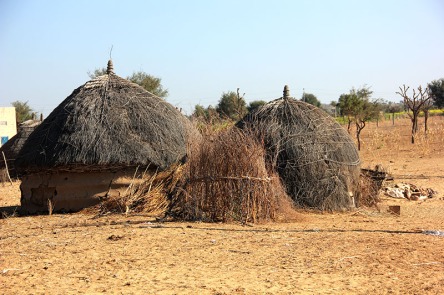Today as we remember two great souls of our nation ; Mahatma Gandhi (http://www.mkgandhi.org/articles/gideatocombatglobali.htm) and Lal Bahadur Shastri (http://pmindia.gov.in/en/former_pm/shri-lal-bahadur-shastri/); we can still feel the resonance of the ideologies, they gave years back. Be it Swadeshi, Self Reliance through Harit Kranti, Khadi “a task in which charkha will have the crucial role of spinning the yarn, which will be used further by the handloom weavers to produce entirely hand-made cloth, called khadi or khaddar (hard-spun, hand-woven cloth).” or for that matter progressive sustainable futures.
When an Indian mill-owner heard of Gandhi’s efforts, he called upon him to convince him that the best way of reducing dependence on imports was to establish more Indian mills.
“I am not doing exactly that,” Gandhi replied “but I am engaged in the revival of the spinning wheel.”
“What is that?”—the mill-owner asked, feeling still more at sea.
After explaining his work to him, Gandhi concluded: “I swear by this form of Swadeshi, because through it I can provide work to the semi-starved semi-employed women of India. My idea is to get these women to spin yarn, and to clothe the people of India with khadi woven out of it.” (http://www.mkgandhi.org/articles/gideatocombatglobali.htm)
The term Slow Fashion which has created a stir in the fashion industry ; was unknowingly the Indian lifestyle in pre independence era.
Today we cant stop ourselves from writing about Nani (Grandmother) , the inspiration , the strength and the lifeline of Blue Madder. She has been the axis of a large family ( read 150 members). The family which was totally dependent on the land , the rains and the labour they put in, to feed the mouths. In the fields, women folk participated equally as their counterparts and at home they took the total charge. Needless to say , they were the arduous lot and Nani being the eldest the leader.

Women also took great care of the resources available around them, be it water, flora or fauna. They were true followers of Shatriji’s ideology of self reliance. Ghandiji always believed that we as a nation should not be dependent on anybody for our needs and so did Nani. She was the metaphor in creating an eco system where dependency on outer factors was negligible. Right from food to footwear and clothes to thatched roofs everything was done by hands. The model was designed in a way to generate livelihoods at maximum touch points. The community worked in total harmony where everybody’s role was defined.
Another major Gandhian attribute that they religiously followed was spinning. Inseparable part of their daily chores.In other terms they were practicing sustainable slow fashion way back. They used hand spun and hand woven fabric which was then hand stitched to make garments.There slow fashion was a unified representation of sustainable, eco, green and ethical fashion. This eco system of spinning and weaving was the spine of sustainable economy and inter dependency rather than intra dependency.



Now years later , when we turn back and see, this eco system is no where to be found. A void can be sensed when for every single task we are dangerously dependent on outer forces.This void is the driving force of Blue Madder.
Blue Madder is re- building the same sustainable and self reliant eco system in western Rajasthan.








